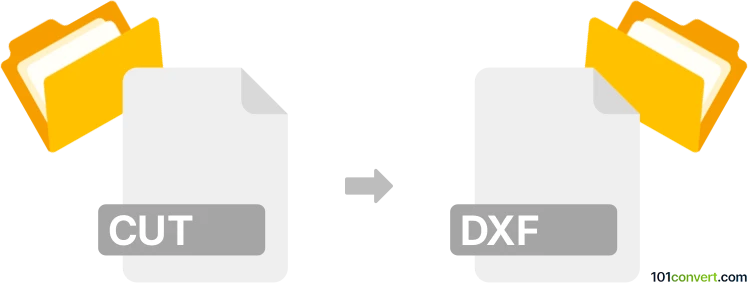Convert CUT to DXF
How to convert legacy CUT bitmap files to DXF vector format for use in modern CAD applications.

How to convert cut to dxf file
- Other formats
- No ratings yet.
101convert.com assistant bot
2h
Understanding CUT and DXF file formats
CUT files are primarily associated with Dr. Halo, a raster graphics editor popular in the late 1980s and early 1990s. The CUT format is a bitmap image file, often used for storing simple graphics and icons. It is now considered obsolete and is rarely supported by modern software.
DXF (Drawing Exchange Format) is a widely used CAD (Computer-Aided Design) file format developed by Autodesk. DXF files store 2D and 3D drawings and are compatible with many CAD applications, making them ideal for sharing and editing vector-based designs.
Why convert CUT to DXF?
Converting a CUT file to DXF allows you to bring legacy bitmap graphics into modern CAD workflows. This is useful for repurposing old designs, logos, or technical drawings in vector-based applications, enabling easier editing, scaling, and integration into new projects.
How to convert CUT to DXF
Since CUT is a raster format and DXF is a vector format, the conversion process involves two main steps: first, converting the CUT file to a more common raster format (like BMP or PNG), and then using vectorization software to convert the raster image to DXF.
Recommended software for CUT to DXF conversion
- XnConvert: Use this free tool to convert CUT files to BMP or PNG. Open your CUT file, then use Output format to select BMP or PNG.
- Inkscape: This open-source vector graphics editor can trace bitmap images and export them as DXF. Open your BMP/PNG in Inkscape, use Path → Trace Bitmap to vectorize, then File → Save As and choose DXF as the output format.
- Online-convert.com: For a web-based solution, upload your CUT file, convert to PNG, then use the same site or another online tool to convert PNG to DXF.
Step-by-step conversion process
- Open your CUT file in XnConvert and export it as a BMP or PNG image.
- Launch Inkscape and open the exported BMP/PNG file.
- Go to Path → Trace Bitmap to convert the raster image to vector paths.
- After tracing, go to File → Save As and select DXF as the output format.
Tips for best results
- Ensure your CUT image has high contrast for better vectorization results.
- Clean up the image in a raster editor before vectorizing to remove noise or unwanted elements.
- Review the DXF output in a CAD program to verify accuracy and make any necessary adjustments.
Note: This cut to dxf conversion record is incomplete, must be verified, and may contain inaccuracies. Please vote below whether you found this information helpful or not.